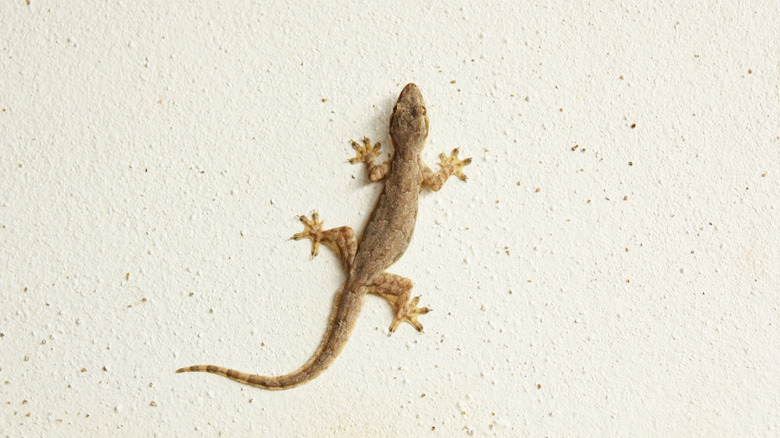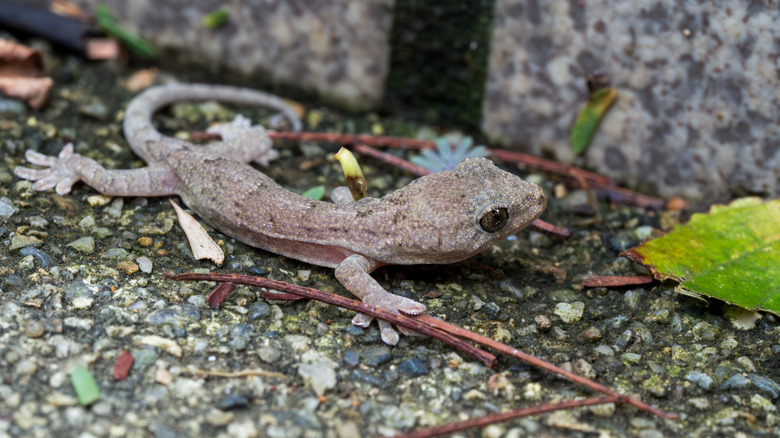Spot A Lizard In Your House? Here's What To Do
If you've ever had a lizard scurry by you while relaxing at home, it might've made you jump. Most lizards aren't venomous, and they're happy to eat all the insects in your house. But it doesn't change the fact that many people are creeped out by them. Not to mention, they can also harbor disease — so they're a creature you might not want as your new roommate. There are steps to take to discourage sneaky lizards from entering your home. Yet, if a sneaky lizard does manage to get in, you can attempt to humanely trap it and set it free.
Lizards typically get into houses while searching for food and water sources. Once inside, they'll seek out hiding spots. If you do happen to notice one on the wall or running across the floor, don't panic. The first thing to do is try and identify what type of lizard it is. Jot down its features and look them up online. Likely, the lizard will be harmless — but if you discover it's an aggressive type or it's just really big in general, the best thing to do would be to call in a wildlife professional. It could even be your neighbor's lost pet.
Catch the lizard by following these steps
These types of reptiles move quickly, so containing the lizard in one area will make trapping it easier. If you know it's in a specific room, close it off and seal the crack under the door with towels, which will keep the lizard from escaping. For a lizard that's on the floor, place an empty container down, turning it on its side. Now, use a broom to gently persuade the lizard to move towards the box (don't actually make contact with it, though). Hopefully, it'll run inside the container, trying to hide. If not, spritzing it with cold water can help reduce its speed.
Use a similar method if the lizard is on the wall; only hold the container under it as you try to coax it inside with the broom. Cover the box with a book or flat object until you can get outside and release it back into the wild. Keep in mind that lizards can be beneficial in gardens. If you were unsuccessful in getting the lizard into the container, you can try and lure it in with fruits, veggies, and bugs. Cover a box with a piece of plastic wrap and make a slit in the center with a sharp tool. Place the bait both on top and inside the container. After you successfully trap the lizard, take it back to nature.
For a pest-free home in the future, it's wise to take preventive measures. Seal entry points where a lizard could get in, like through cracks and holes. Also, eliminate any food sources that could attract them.

